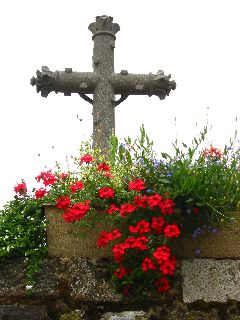"This is great! Where else can I go?"
Due to its proximity to the ocean, Brittany has always been a country of seafarers. Master sailors, 'Bretons' traveled to exotic places and traded with the world.
An independent nation until the 15th century, Brittany guarded many of its regional traditions well into the 20th century. Though the traditional dress has all but disappeared, in remote corners there are still a few little old ladies that lace up their bonnets every morning. Today the costumes can be seen in festivals and celebrations. Traditional music and dance bear a strong resemblance to their Gaelic cousins.
Breton, the regional language, is similar to Welsh and Cornish. It was prohibited from being taught after WWI, due to language barrier problems in the trenches. (In fact, all regional languages were suppressed: Basque; Corse; Provencal…) However, in the last generation, Breton has experienced a revival, and there are now bilingual schools where classes are taught in Breton and French.
If you get a chance, go to see Audrey Tatou's (of Amelie fame) latest film, 'A Very Long Engagement.' Not only is it a great WWI film, but much of it was shot in Finistère, so it gives you a good idea of what to expect. (No, not the battle scenes!) You can even catch a glimpse of Locronan's town square.
For those that would like to visit more of Brittany, we've put together the following list.
Finistère
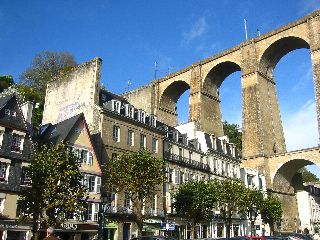
Morlaix
Essentially a fishing village in the early middle ages, Morlaix developed into one of the most active harbors in Brittany during the 15th-18th centuries. The town's prosperity was largely thanks to a thriving tobacco trade.
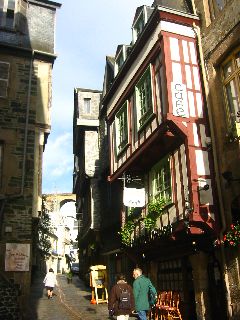
Morlaix's site could not be more dramatic. Nestled in a narrow valley, the main town square is dominated by a massive viaduct constructed between 1861 and 1864. Around the square and in the neighboring streets one can see many half-timbered houses typical of the 15th-16th centuries. To reach the city center from the train station, walk (or drive) down, down, down…
Roscoff
Just a little north of Morlaix, sits the coastal town of Roscoff. Home to the infamous 'corsaires' (state-sponsored pirates) during the 16th century, today Roscoff houses the more politically correct salt-water therapy (Thalasso) industry. Despite their illicit activities, the king's pirates built a beautifully uniform granite village. This area, the town's historic heart, has been remarkably well preserved.
Due to its proximity to the UK, Roscoff is essentially a resort town for overworked Brits looking for a little relaxation. Therefore, the town is 'english-friendly' and has lots of shops and restaurants. In spite of its popularity, rooms in Roscoff are still very affordable, starting at around 50€.
For those of you continuing on to the UK, you can catch the ferry to Plymouth from Roscoff.
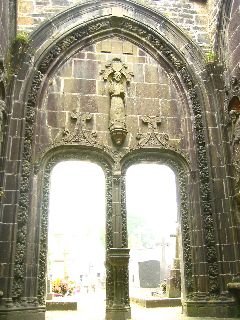
Daoulas
This is a charming medieval town renowed for its religious heritage. The former abbey-church, which today serves as a cultural center, is one of the most important sites of Romanesque architecture in Finistère. Its monumental fountain is said to cure blindness and sterility.
Le Conquet / Île de Ouessant (Ushant)
This area is 'Land’s End,' the westernmost point on mainland France. Just off the coast is a series of islands, the largest of which is the spectacular Island of Ouessant (Ushant). As the entry point to the Brest Bay, the area is rich in maritime history and home to lots of lighthouses, which help to guide sailors through the sometimes treacherous waters. The rocky coast of Ouessant inspired an old sailor's lament that goes "Qui voit Ouessant voit son sang." Which translated means "He, who looks upon Ouessant, looks upon his death."
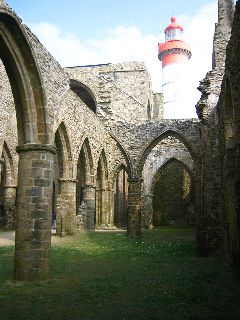
The fantastic ruins of an old abbey are located in the tiny burgh of Pointe St-Mathieu.
From Le Conquet or Brest, you can take a day trip to the Island of Ouessant (Ushant). Boats depart around 8 or 9am and return around 5pm. The trip costs about 30€.
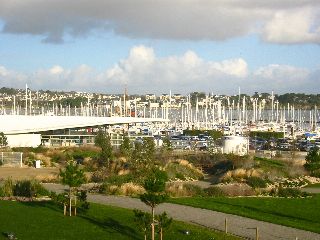
Brest
The largest city in Finistère, Brest has historically been a sailor's city. A naval stronghold for hundreds of years during France's wars with England, Brest continues to be one of the most important naval bases in France.
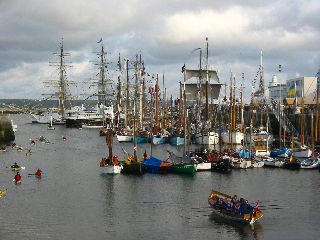
Like many cities in Normandy and Brittany, Brest suffered incredibly heavy damage during WWII. Having been occupied by the German Navy, the port was one of the key targets for American and British bombers. After 43 days of siege, Brest was finally liberated in September 1944. Ninety percent of the city had been destroyed during the liberation effort. Just ask Gerard's dad; he was there. A tribute to the heartiness of the Breton people, Brest was fully reconstructed during the 1950’s.
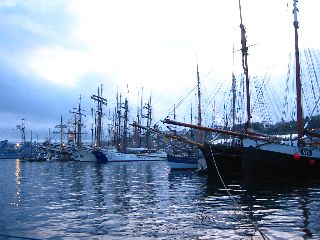
For you connoisseurs, be sure not to miss the 'Histoire de Chocolat' on the rue de Siam. This is the world's finest chocolate shop. Really, it's a fact. They have twice won the 'Best Chocolate in France' award. Trust me, the Belgians ain't got nuthin' on these guys.
Presqu'île de Crozon
For you outdoorsy types, the Crozon Peninsula is a great place for a hike or a bike ride. For you non-outdoorsy types, it's not bad for a drive either. The peninsula boasts some of the most dramatic coastline in Brittany… cliffs, sea, beaches, lighthouses… a paradise for wandering souls, there are many short-distance hiking paths and a long-distance trail that follows the entire perimeter. Accommodation is found throughout.
Not only for nature lovers, the peninsula is also home to many picturesque towns and has a rich Celtic heritage.
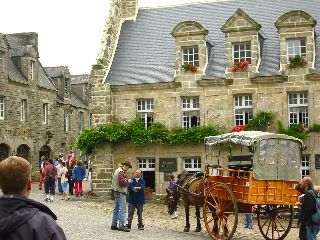
Locronan
This is one of my favorite spots in Finistère. The site has been occupied since the 5th century BC when a druid settlement was founded here. To this day the town still recreates a 12 kilometer druid procession every 6 years. (Sorry, the next one is in 2007.)
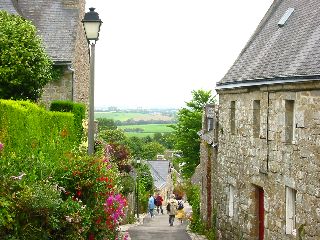
Beginning in the 15th century Locronan was the center of a prosperous hemp producing industry. No, they didn't smoke it. They wove it into sailcloth, which was used by the French Navy, the Spanish Armada, and the East India Company, to name a few. It was sailcloth from Locronan that carried Spanish galleons laden with gold from the Americas home across the Atlantic.
Today Locranon is home to artists and artisans and it's architecture dates from the 15th-18th centuries. It has been named one of the 'most beautiful villages of France.' You must park on the outside of the town and walk in as the entire town is protected.
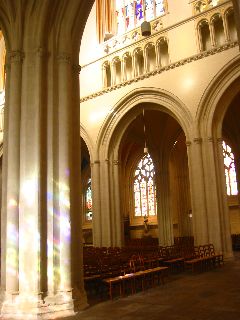
Quimper
Quimper is the largest city in southern Finistère. Home to a regional pottery industry that is over 300 years old and to the spectacular Cathedral of St. Corentin, Quimper is essentially the cultural and religious seat of Finistère.
The Cathedral was begun in the 13th century and is one of the most important examples of Gothic architecture in Brittany. It has one particularly mysterious and unique feature: it's nave lies at a different angle from the apse. In other words, it's crooked. The reasons for this remain unknown. The most poetic hypothesis is that the apse represents the inclination of Christ's head on the cross. A more pragmatic explanation is that the angle was the result of avoiding bad soil or the adjacent River Odet. Recently renovated, the Cathedral now appears as it did at the end of the 15th century.
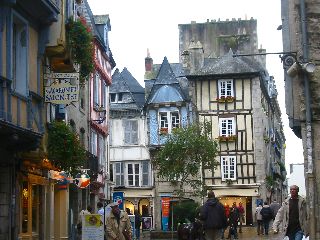
The city center is extremely well preserved and contains beautiful examples of half-timbered houses dating from the 15th-16th centuries as well as 18th-19th century stone houses, typical of Brittany.
Concarneau
Less than an hour's drive from Quimper you will find Concarneau. Inhabited by fisherman since prehistoric times, the town is still one of the principal fishing ports of France.
At the heart of this picturesque town is a fortified medieval village, which dates from 1491. Other than some modifications to the fortified walls during the 17th century, it looks today much as it did over 500 years ago.
There is a lively indoor fish market everyday and a traditional outdoor French market on Mondays & Fridays.


